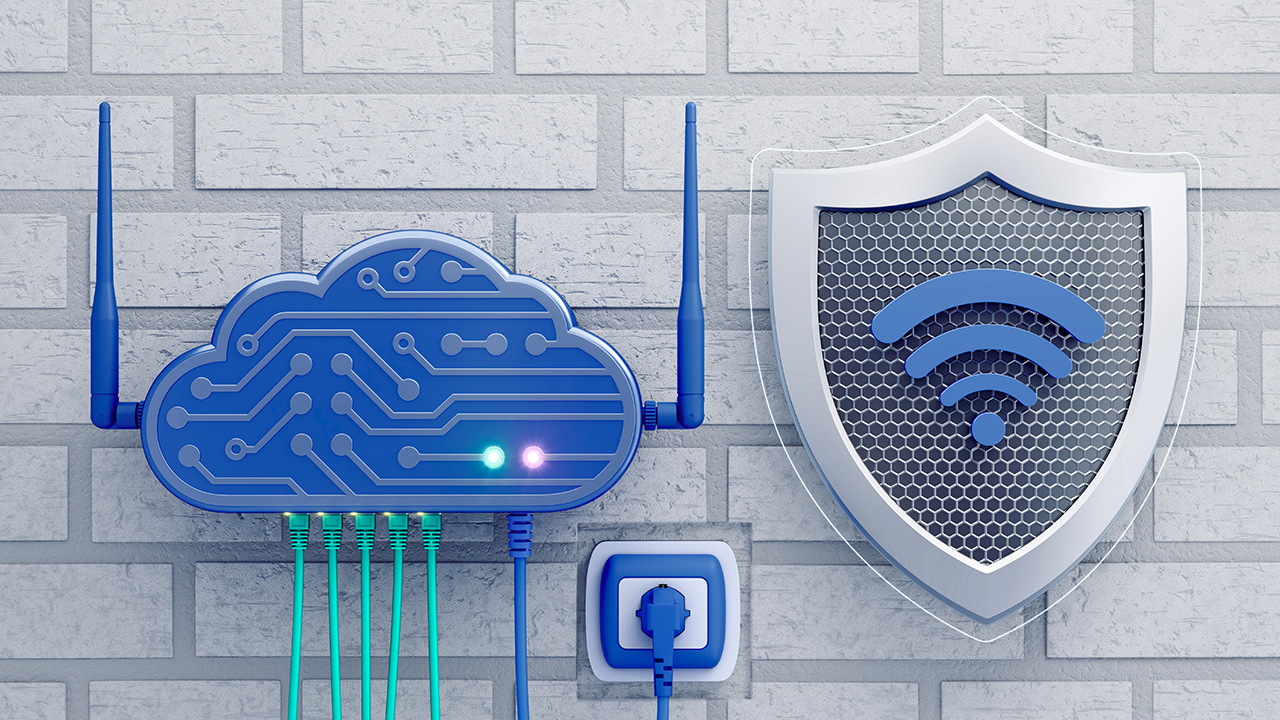The pervasiveness of Wi-Fi is such that it has become the default, often the sole, artery of connectivity in both our personal and professional spheres. It’s hard to imagine, but there was a time when accessing the internet meant being tethered to a wall by a cable (and an even older time when you had to tell your computer to connect). Today, Wi-Fi allows us to roam freely, with the entirety of the internet in our pockets or at the tips of our fingers, anywhere within the signal’s embrace. From nonprofit offices and corporate headquarters, where the air is thick with the hum of collaborative projects and virtual meetings, to cafes where remote workers and digital nomads set up their temporary offices, Wi-Fi is the silent orchestrator of our daily routines. This is especially true for home users, hybrid workforces, and nonprofit organizations who rely more heavily on inexpensive and simple solutions.
Yet, in this digital idyll, there lurks a less savory element…
Our Cyberpunk Future is Here
In December of 2023, a task force was formed in Oakland County, Michigan, for the sole purpose of thwarting a highly-trained gang of house burglars. But these are no ordinary thieves. While this may sound more like a William Gibson novel, these thieves are actually a high-tech underground syndicate, using packet sniffers and Wi-Fi jamming to shut down Smart Home security systems before breaking in and absconding with valuables. https://www.msn.com/en-us/news/crime/homeowners-beware-burglars-are-using-new-technology-for-break-ins-across-the-country-heres-what-you-need-to-know/ar-AA1le1Ab
But this example isn’t isolated. In fact, back in March of 2022, a homeowner in New York was fortunate enough to catch would-be burglars on camera from his backyard. Despite promptly calling the police, the criminals escaped. According to the arrest warrant, police discovered some pretty sophisticated evidence at the scene, including two-way portable radios, a Wi-Fi jamming device, a pry bar, bolt cutters, gloves, and a glass punch tool. Turns out they were part of a syndicate based in Connecticut and were caught not long after the incident. https://www.cepro.com/news/tech-savvy-burlgars-use-wi-fi-jamming/
And not to pour salt onto the wound, just recently (February 2024), reports of a string of nine burglaries over 6 months occurred in Minnesota. Investigators suspect this may also be related to a larger group, but the modus operandi is eerily similar. https://www.tomshardware.com/networking/wi-fi-jamming-to-knock-out-cameras-suspected-in-nine-minnesota-burglaries-smart-security-systems-vulnerable-as-tech-becomes-cheaper-and-easier-to-acquire
But it’s not just individuals who are at risk of break-ins and tech crime. In early 2023, a nonprofit organization in California whose mission is to help kids learn and use technology had $25,000.00 of tech equipment stolen from their facility. Their “security system was down” at the time it happened. https://abc7.com/free-tech-class-cudahy-nonprofit-theft-southeast-la/12671245/
So, what are Wi-Fi Jammers and How Do They Work?
Wi-Fi jammers are devices that can interfere with the radio signals that wireless technologies use to communicate. They can create noise or fake signals that can confuse or block your Wi-Fi router or wireless devices. Wi-fi jammers can be used for various purposes, such as trying to gain unauthorized access to something, disrupting surveillance, or causing mischief. Some Wi-Fi jammers are small and portable, while others are more powerful and can affect a large area.
Owning and using wireless jamming technology is illegal in and of itself. But if you’re looking to pilfer valuables from lavish homes in affluent neighborhoods, it’s apparently a line that many are already willing to cross. Unfortunately, despite their illegality, they can still be bought online or made by hackers. When criminals use them on a home or office, here’s what can happen:
- You experience a slow down or total interruption of your internet connection, making it difficult or impossible to browse, stream, download, or do anything you normally do over a Wi-Fi connection.
- They prevent you from accessing your Wi-Fi devices or internal router itself, making it hard to change your password or update your firmware.
- They render devices solely dependent on wireless connectivity dysfunctional, taking down IoT devices and Smart Homes in the blink of an eye, including popular home and small office security systems.
What Can You Do to Protect Your Wi-Fi from Jammers and Hackers?
Hackers and Wi-Fi jammers can be hard to detect and stop, but there are some steps you can take to protect yourself, your homes, and your offices from them.
To try to protect yourself from hackers…
- Use a strong and unique password for your Wi-Fi network and router and change it when necessary (e.g. employee turnover or a falling out with your roommate).
- Enable encryption for your Wi-Fi network, such as WPA2 or WPA3, which can make it harder for hackers to intercept or spoof your Wi-Fi signals. You can also hide your wireless SSID to trick would-be hackers into thinking you don’t have any Wi-Fi.
- Update your Wi-Fi router and device firmware, which can fix security vulnerabilities and improve performance. Consider upgrading your devices to something reputable and known for security.
- Use a VPN (virtual private network), which can encrypt your internet traffic and hide your online identity and location from hackers and jammers.
To try to protect yourself from Wi-Fi jammers and high-tech burglaries…
- Use a Wi-Fi analyzer app or tool, which can help you monitor your Wi-Fi signal strength and quality and detect any interference or anomalies. You can also hide your wireless SSID to trick would-be jammers into thinking you don’t have any Wi-Fi.
- Report any suspicious or illegal Wi-Fi jamming activity to your internet service provider or local authorities, who can investigate and take action.
- Don’t rely solely on wireless. Wired networks are a tried-and-true method of connectivity. While they are less convenient, using shielded Cat6 cabling to wire your home or office properly can have a profound impact on network performance and, in the case of wireless jamming, security posture.
- With this in mind, avoid using security systems that only operate wirelessly. Mix and match wireless and wired solutions so your cameras and alarms aren’t rendered completely useless by a jammer.
- Ensure you have powerful battery backups in place connected to your most important security and network devices so if the power is killed, your wired devices don’t shut off.
Lastly, consult with and leverage experts and professionals who specialize in security. Have them assess your business offices or home networks and work with you to secure them properly. As technology becomes more advanced and ubiquitous, criminals will continue finding clever and malicious ways to exploit that technology for their own benefit. However, by working together, sharing knowledge, and taking a security-first mindset, we can make your world and everyone else’s a lot safer.
If your nonprofit organization needs help or guidance securing your office networks and Wi-Fi, please don’t hesitate to reach out today for a free consultation! https://www.connectcause.com
— ConnectCause.com —



